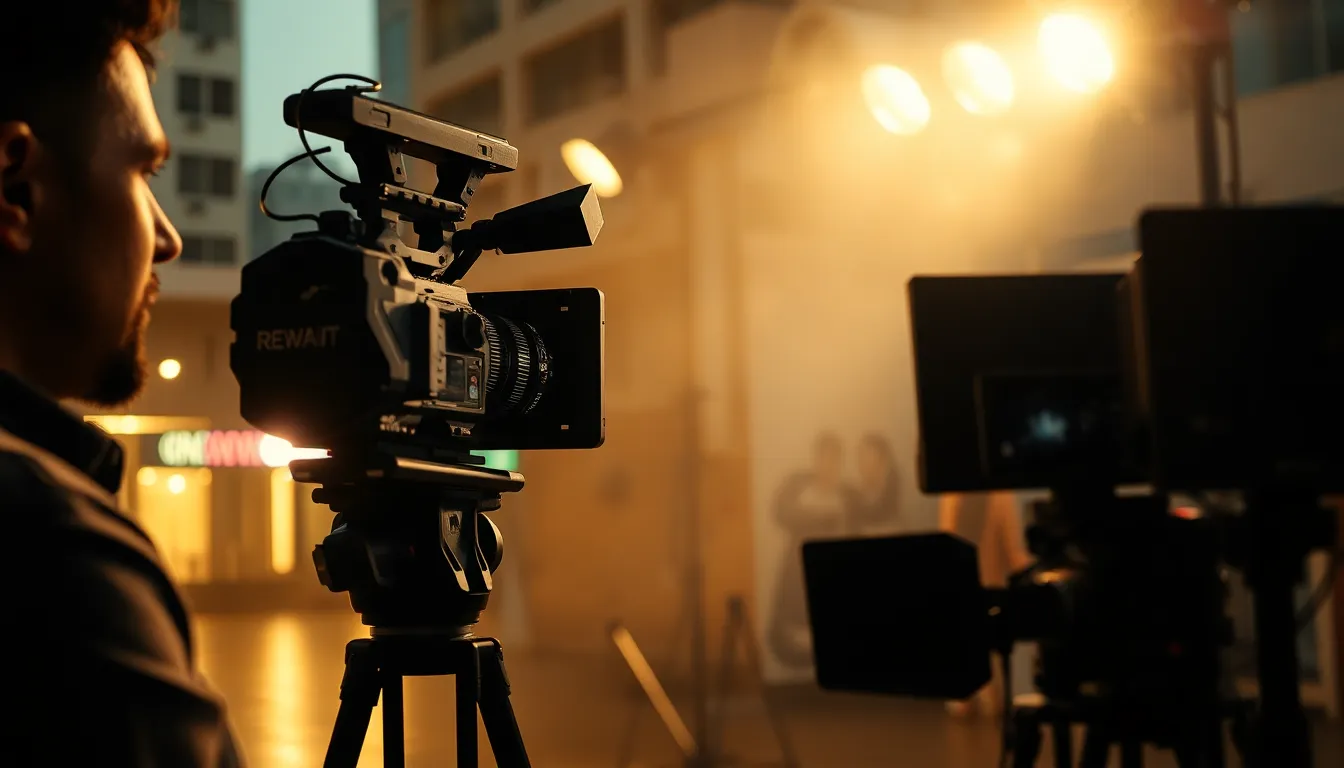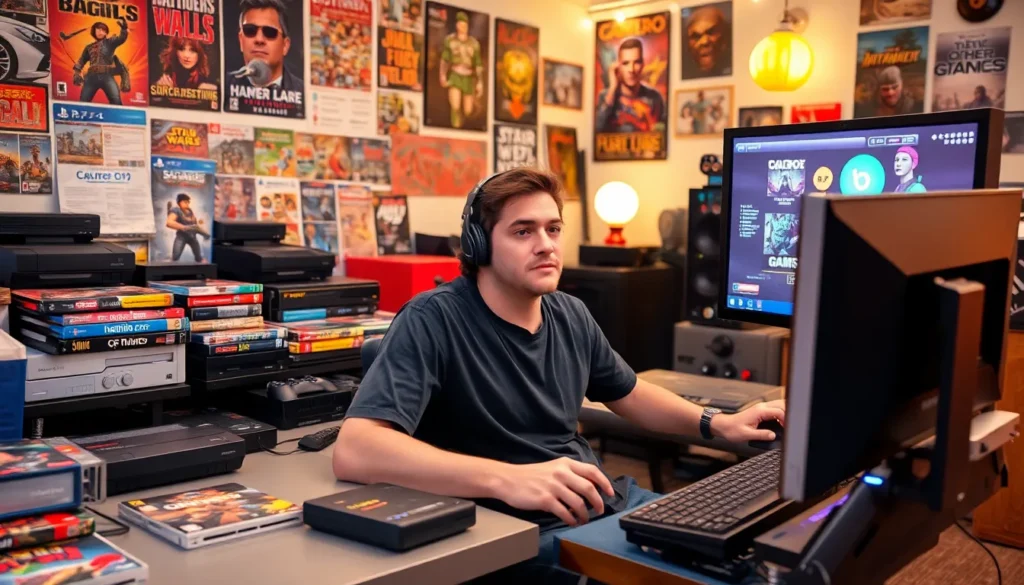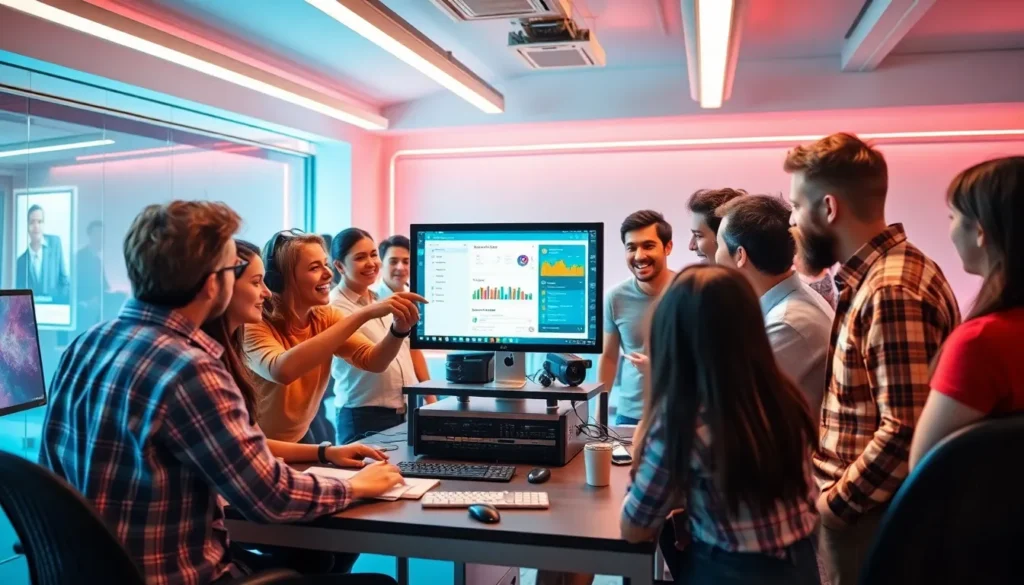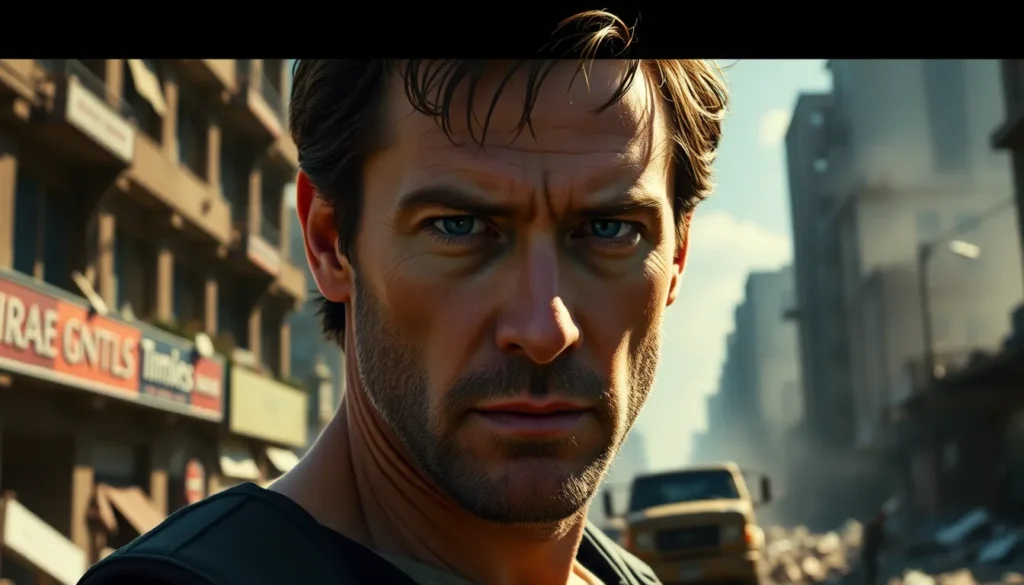Table of Contents
ToggleEver watched a movie and thought, “What just happened?” You’re not alone. Film scene breakdowns are the secret sauce for understanding those jaw-dropping moments that leave audiences gasping or scratching their heads. They peel back the layers of storytelling, cinematography, and character development, revealing the magic behind the scenes.
Imagine diving deep into the nuances of a gripping scene, unpacking the choices that make it unforgettable. Whether it’s the subtle flicker of a character’s eye or the way a score swells, breaking down these elements can transform casual viewers into film aficionados. So grab your popcorn and get ready to dissect the art of filmmaking—because every great movie deserves a second look, and who doesn’t love a good plot twist?
Understanding Film Scene Breakdown
Film scene breakdowns serve as tools for deeper analysis of cinematic storytelling. They focus on the intricate elements that create powerful moments within films.
What Is a Film Scene Breakdown?
A film scene breakdown examines individual scenes to uncover their components. It includes elements such as dialogue, camera angles, and actor performances. By dissecting these aspects, viewers gain insights into how scenes contribute to overall narrative progression. Techniques like blocking and lighting are also analyzed to understand emotional effects. This process enables audiences to identify the filmmakers’ intentions and techniques more clearly.
Importance of Film Scene Breakdown
Film scene breakdowns enhance appreciation for the craft of filmmaking. Understanding the mechanics behind a scene reveals the thought process of directors and writers. This knowledge transforms passive viewers into engaged critics. By recognizing the importance of each element, audiences can grasp how mood and tone are created. Moreover, it encourages discussions about storytelling techniques, fostering a community of film enthusiasts. Engaging in scene breakdowns helps individuals develop their analytical skills and enrich their viewing experience.
Elements of a Film Scene Breakdown

Understanding the elements of a film scene breakdown provides insight into filmmaking’s intricacies. Various components work together to shape the audience’s experience.
Visual Composition
Visual composition includes elements like framing, color, and shot selection. Directors use specific angles to convey emotions and themes. The arrangement of subjects within a frame establishes focus and narrative depth. For example, a close-up shot can emphasize a character’s emotional state, drawing viewers closer to their experience. Lighting plays a critical role in setting the mood, affecting how audiences perceive scenes. Every detail contributes to the overall visual storytelling, engaging viewers and enhancing immersion.
Sound Design
Sound design integrates dialogue, sound effects, and music to create an auditory landscape. Background sounds enrich environments, providing a sense of realism. Music sets the emotional tone, influencing how audiences feel about scene developments. For instance, upbeat music can energize a joyful moment, while somber tones can heighten tension. Every sound element is carefully curated, reinforcing the narrative’s emotional arcs and offering additional layers of meaning. Each auditory cue serves to enhance the film’s overall atmosphere and enrich the viewer’s experience.
Acting and Performance
Acting and performance are central to conveying a film’s emotional core. Actors use body language, facial expressions, and vocal tones to bring characters to life. Every choice made by an actor shapes how audiences connect with their roles. For instance, nuanced performances can communicate complex internal conflicts, fostering a deeper understanding of a character’s journey. The chemistry between actors can also elevate a scene, making interactions more believable. Each performance adds a layer of authenticity, making the audience invested in the characters’ stories.
Techniques for Effective Breakdown
Effective film scene breakdowns involve understanding key components that enhance storytelling. Analysts focus on narrative structure, themes, and motifs to delve deeper into a film’s meaning.
Analyzing Narrative Structure
Breaking down the narrative structure reveals how scenes contribute to overall plot development. Analysts examine the setup, conflict, and resolution present in scenes; these elements determine the film’s pacing. They also pay attention to character arcs, ensuring the audience connects with the journey. Clarity in exposition, rising action, climax, and denouement creates a compelling narrative framework. Techniques like flashbacks or nonlinear storytelling can enrich scenes, making analyses more complex.
Identifying Themes and Motifs
Identifying recurring themes and motifs helps viewers appreciate the film’s deeper meanings. Analysts look for visual symbols, colors, or repeated phrases throughout scenes. These elements often express the film’s central ideas, inviting the audience to reflect on its messages. For instance, isolation might be conveyed through empty spaces or solitary characters. Recognizing these motifs establishes a connection between individual scenes and the film’s broader context, enhancing viewer engagement. Engaging deeply with these themes enriches one’s understanding of the filmmakers’ intentions.
Tools and Resources for Film Scene Breakdown
Various tools and resources exist to facilitate film scene breakdowns. These aids enhance the analysis process, allowing film enthusiasts to understand scenes thoroughly.
Software and Applications
Dedicated software simplifies scene breakdowns and helps users analyze film components effectively. Programs like Final Draft aid in exploring scripts, while Adobe Premiere Pro allows users to dissect editing techniques. Tools such as Scenechronize streamline the management of shot lists and schedules, enabling a deeper look into production elements. For sound design, software like Avid Pro Tools provides options for analyzing audio elements, making it easier to connect sound with visual storytelling. Overall, these applications prove invaluable for enhancing critical thinking about films.
Books and Online Courses
Numerous books and online courses focus on film analysis, enriching knowledge for enthusiasts at any level. “Making Movies” by Sidney Lumet offers insights from a veteran director’s perspective on filmmaking intricacies. Online platforms like Coursera and MasterClass feature courses led by industry professionals, covering storytelling techniques and scene breakdown methodologies. Furthermore, academic texts such as “Film Analysis: A Norton Reader” provide frameworks and examples for deeper understanding. Combining these resources equips viewers with the skills needed to perform thorough scene analyses, promoting a richer appreciation of cinema.
Engaging with film scene breakdowns opens up a world of appreciation for cinema. By dissecting the elements that make up individual scenes viewers can unlock deeper meanings and emotional connections. This analytical approach not only enhances understanding but also fosters a community of film enthusiasts eager to discuss and explore storytelling techniques.
The tools and resources available today make it easier than ever to dive into this art form. Whether using dedicated software or exploring insightful literature aspiring analysts can refine their skills and enrich their viewing experiences. Ultimately the journey of analyzing film scenes transforms casual viewers into informed audiences who recognize the artistry behind every frame.







